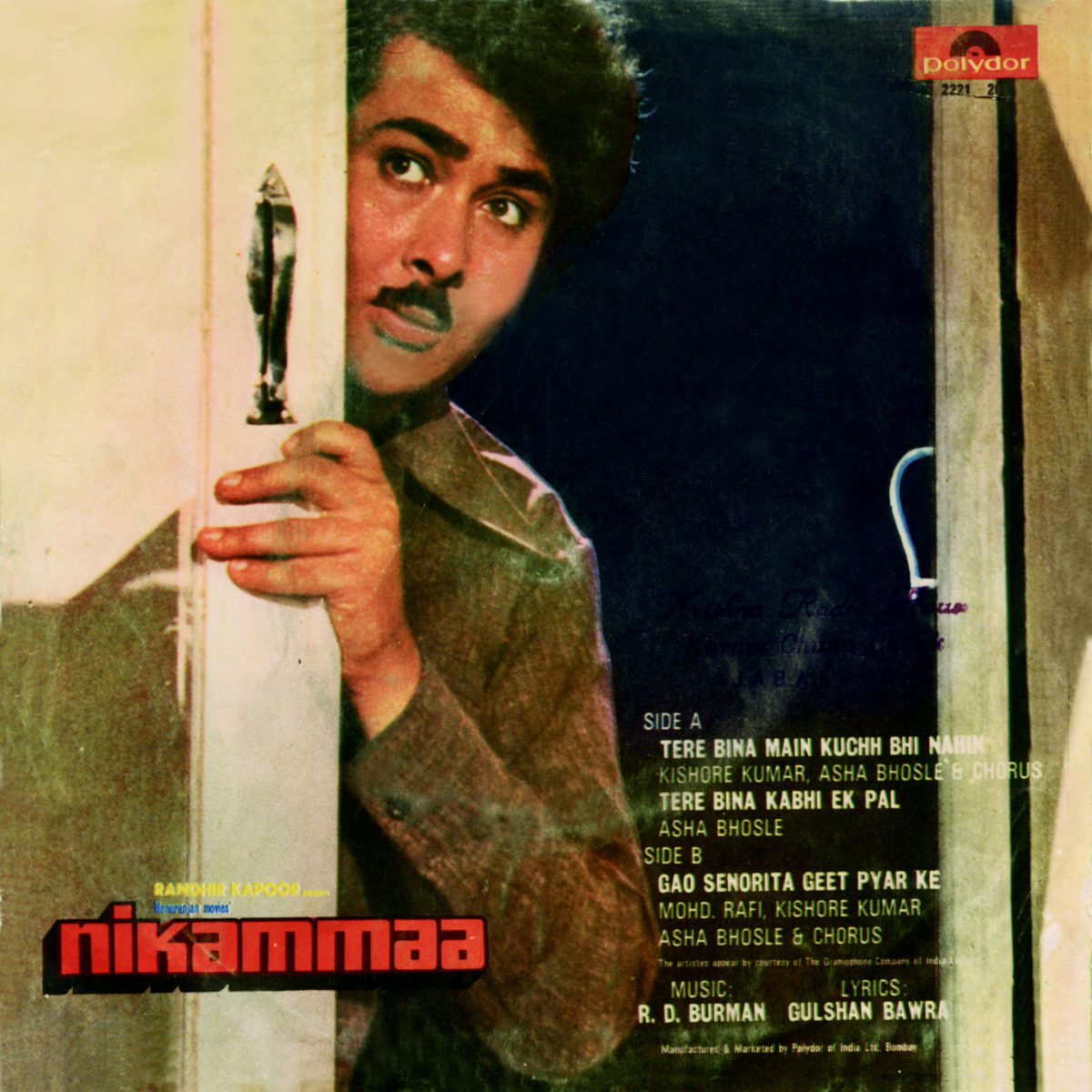Tere Bina Main Kuch Bhi Nahin …

Film: Jaane Jaan / Nikamma (1984)
Producer: Mandir Sial
Director: Ramesh Behal
Lyrics: Gulshan Bawra
Singers: Kishore Kumar, Asha Bhosle and Chorus
–
There have been many successful pairs of Actor-Music director in the Hindi film Industry like Dilipkumar-Naushad, Raj Kapoor-Shankar Jaikishen , Dev Anand-S.D.Burman, Rajesh Khanna-Pancham and many more.
Let us talk about another pair Randhir Kapoor – Pancham, in fact, let me add two more dimensions to it, the film producer/director Ramesh Behl and Gulshan Bawra . This quartet has enthralled us by many gem songs right from the emotional “Kasme Vaade nibhayenge ham” (Kasme Vaade) to the melodious “Kabhi palkon pe aansoo” (Harjaai), mainly due to the super-tuning they had both professionally and mentally.
The song in the context is from “Jaane Jaan” (film later released in name of Nikamma) sung by Kishore kumar, Asha Bhosale and chorus. It’s a romantic song with the north-eastern folk tune.
The song starts with the male chorus singing “Dola ya la doom dore naara doom” joined by female chorus humming the main tune of the song. Listen carefully to the rhythm in the background developed by some kind of sticks reminding the north-eastern stick dances. This is the core of the song around which whole song is woven beautifully.
Here enters Kishore Kumar with the sign line “Tere bina main kuchh bhi nahin hoon” beautifully tuning his voice to the whole ambience. The first interlude starts with beautiful pahadi tune on flute interspersed with the strums on Ghatam (or matka played with metal rings in fingers) and the beats on Tumba. The string instrument and flute beautifully mix with each other followed by sweet twists of flute. Do not miss the catchy pick up on Tumba for sign line which steps downwards from start of Tere Bina… upto end of.. Kuchh bhi naheen.
Asha takes over from Kishore at the end of the first stanza with a totally different sign line “Duniya yeh duniya apni naheen hai, ham to chale hain aur kaheen”. This is an interesting (and could be unique) feature of the song where the lead singers have different sign-lines and never return to each other’s sign-line. The pause just before Asha’s sign-line further make the difference in the sign-lines very distinct.
Second interlude starts with the Taar shehnai with the beats of tumba & chanda followed by chorus singing “dora ra la dum” and a short run of violin.
Asha’s voice is something special in this stanza. While being sweet it sounds very sincere and true to the lyrics, especially in “Ho.N.gi badee haseen duniya apne liye naheen , diya jo duniya ne woh ham chhod ke chale yaheen, apna haal to aisa hai , badli mein ho taara” as her voice on screen, Neetu Singh , the heroine is not going to live long enough to be with hero. Such lyrics as well as Pancham’s speciality give director’s visuals for filming.
The chorus ends the song singing the main sign line.
The main fascinating characteristics are Pancham’s visualization and perfect creation of whole ambience of the Pahadi background. It applies for all facets of the song such as tone of the song which is very soft, the instruments creating melody which just paint the whole picture before you, the chorus singing tribal tune and words and above all the rhythm and a soft echo throughout.
This makes the song the one of the most beautiful pahadi dhun ever created by Pancham.
This tune has been reused in Khel Khel mein (or may be other way round) but in a background music where Asha hums this tune is in her trademark “la la la la la”.
Sudhir Kulkarni
Panchammagic.org

